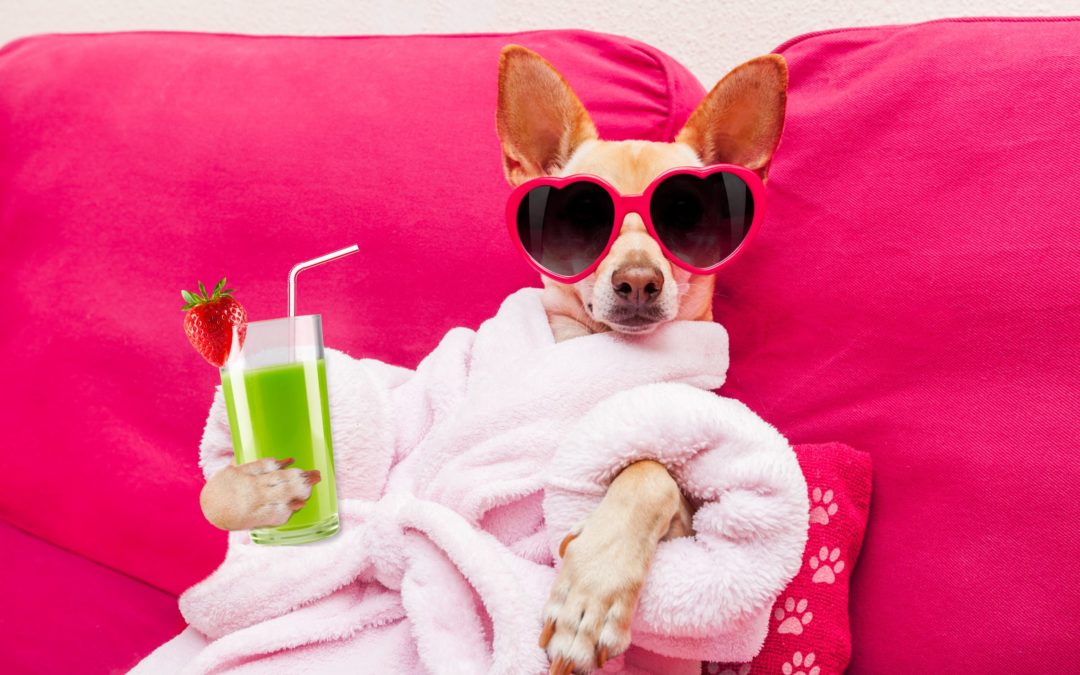At the Sunshine Lady House, RACSB staff work with individuals experiencing acute psychiatric crises to stabilize them and to avoid hospitalization or incarceration. Treatment includes counseling, medication management, discharge planning, and more.
While at the residential crisis stabilization program, guests learn about the importance of self-care. This is a critical piece of recovery, said Therapist Kim Lovell. And everyone could benefit from learning the techniques, whether they’ve experienced a psychiatric crisis or not, she said.
Guests can stay at Sunshine Lady House for up to 15 days, but the impact of the crisis stabilization program lasts much longer than that. To help guests stay on their path to recovery after leaving the Sunshine Lady House, staff use integrated treatment activities such as yoga, acupuncture, art therapy, and more.
Shopping for Soothing
Guests create Wellness Recovery Action Plans, which are designed to help them avoid further crises and to minimize the impacts of crises that do occur. Part of these plans is learning to “self-soothe.” Lovell created Soothe Mart to make those lessons come alive. She printed pictures of things that could relieve tension–hammocks, aromatherapy candles, motorcycles, etc.
“All of these things can be used to calm anxiety and to soothe you,” she said. “I want them to incorporate these things into their lives when they leave here.”
 Lovell laminates the photos, then places them on the table and assigns each a price. Guests get fake money to shop for soothing items. Lovell talks with them about the different types of self-soothing: The immediate kind, which individuals use to calm when anxiety hits and the preventative kind, which keeps anxiety at bay.
Lovell laminates the photos, then places them on the table and assigns each a price. Guests get fake money to shop for soothing items. Lovell talks with them about the different types of self-soothing: The immediate kind, which individuals use to calm when anxiety hits and the preventative kind, which keeps anxiety at bay.
Individuals at Sunshine Lady House also receive self-soothing kits with calming items for each of the five senses–something to taste, smell, touch, hear, and see. Items could include candies or soft pieces of fabric, for example. Lovell said that this is a concept everyone could incorporate into their self-care routines, making sure that they involve each of the senses.
She said that people should make a list of activities that calm them, so they could turn to these things in times of stress. Some examples include: driving, calling a friend who always makes you feel better, guided imagery, stretching, and walking.
Making Self-Care a Priority
“Incorporate activities in your life that will create balance for your mentally, physically, emotionally, and spiritually,” Lovell said. “Sometimes you have to calm your body down to calm your mind.”
In today’s busy world, self-care often gets pushed to the side. However, Lovell cautioned that taking care of yourself should be a priority.
“It’s necessary for survival; it’s necessary for wellness,” she said. “It can be hard when you have all these responsibilities, but you’d be surprised at how much more you get done and how more effective you are when you’ve taken time for self-care. Do nice things for yourself, because you’re worth it.”

